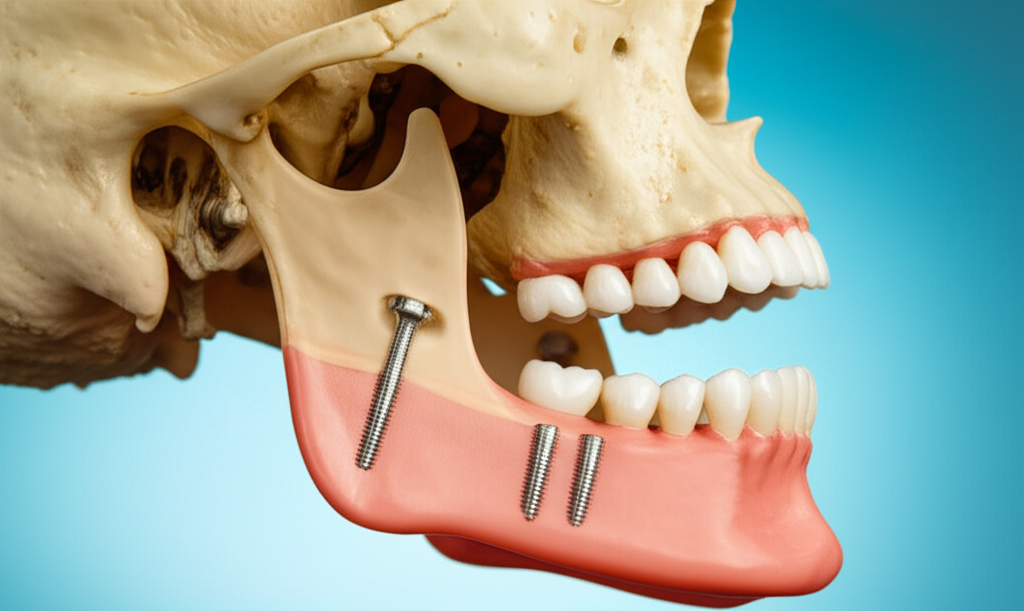
Zygomatic Dental Implants: My Personal Journey to Understanding and Hope for Severe Bone Loss
Article Outline Overview
- Introduction: My First Encounter With Zygomatic Dental Implants
- What Exactly Are Zygomatic Dental Implants?
- Why Zygomatic Implants? Tackling Severe Upper Jaw Bone Loss
- Who is a Candidate for Zygomatic Implants?
- The Zygomatic Implant Procedure: What to Expect
- Initial Consultation & Planning
- The Surgical Phase
- Immediate Provisionalization
- Healing and Final Restoration
- Benefits of Zygomatic Implants
- Potential Risks and Considerations
- Recovery and Aftercare
- Cost of Zygomatic Dental Implants
- Zygomatic Implants vs. Traditional Implants vs. Pterygoid Implants
- Success Rates and Longevity of Zygomatic Implants
- How to Find a Qualified Zygomatic Implant Specialist
- Conclusion: Considering Zygomatic Implants? My Final Thoughts
Introduction: My First Encounter With Zygomatic Dental Implants
Years ago, when I sat in the dentist’s chair and heard, “There’s just not enough bone for traditional dental implants,” I felt defeated. If you’ve ever struggled with upper jaw bone loss or known the pain of loose dentures, you’ll know that feeling. But this was when I heard about zygomatic dental implants—a name that sounded almost like science fiction. My curiosity got the better of me, so I set out to really find out what zygomatic implants are, who they’re for, and why they might be the answer when nothing else seems to work.
Now, I want to share everything I found out, using simple language, and walk you through each step. Whether you’re here for yourself or for someone you care about, let’s take a closer look at zygomatic dental implants together so you can make a smart choice.
What Exactly Are Zygomatic Dental Implants?
So, what is a zygomatic dental implant? In plain words, it’s a special dental implant that goes into your cheekbone (the zygomatic bone) instead of your upper jawbone, and it’s made for people like us who just don’t have enough bone in the upper jaw.
When my dentist first talked about this, I thought of normal implants like stakes you push into the ground. They need enough strong “ground” (bone in the jaw) to hold them. But after years of missing teeth, gum disease, or failed implants, that “ground” can disappear. And that’s where regular implants can’t do the job.
That’s where zygomatic implants come in. Instead of using the weak upper jaw bone, a longer, angled pin goes into the denser cheekbone. The zygomatic bone is strong and still there, even when the upper bone is gone.
I found out these implants are longer than normal ones and are often used in twos or fours depending on your needs. Sometimes people call it “Quad Zygoma” for four implants in the cheekbones or “All-on-4 with zygomatic support.” This way, you can get a whole row of upper teeth that is held up by your cheekbones, helping you smile again.
Why Zygomatic Implants? Tackling Severe Upper Jaw Bone Loss
You might be asking—why not just use regular implants or try a bone graft? I had the same question. The answer is about how little bone is left. If the upper bone is so thin that even bone grafts or sinus lifts can’t fix it—or if those methods didn’t work before—zygomatic implants are often the answer.
Some people I talked to tried big bone graft surgeries, but the bone didn’t heal well, or their health problems kept them from having more surgery. Others just didn’t want all that waiting or more operations. Zygomatic implants are good for:
- People with really bad bone loss in the upper jaw (dentists call this Class IV or worse)
- People who already tried implants or grafts that didn’t work
- People with health problems (like diabetes or past radiation) that make more surgeries risky
If you need a full upper set of strong teeth but can’t use normal implants, the zygomatic route is one way to skip bone grafts entirely.
Who is a Candidate for Zygomatic Implants?
After talking with experts and reading about other patients, I learned that you might be a good fit for zygomatic dental implants if:
But they’re not for everyone. Some health troubles (like ongoing infections, uncontrolled diabetes, or certain bone problems) could mean you can’t do this treatment. That’s why you really need a good checkup—usually with special 3D scans and a medical review.
I have to say: Only skilled teams (oral surgeons and special dentists) can really tell if you qualify. Everyone needs their own plan.
The Zygomatic Implant Procedure: What to Expect
I’ll be honest—the idea of putting implants in my cheekbones sounded scary at first. But knowing what would happen, step by step, really helped me calm down. Here’s how it usually goes, based on my own visits and what other patients told me.
Initial Consultation & Planning
First up, you get checked out carefully. The dental team will:
- Ask about your full health and dental past
- Take a 3D scan (usually CBCT)
- Plan your surgery with special computer programs, sometimes using a digital dental lab for guides
They’ll look at your unique face shape, how strong your cheekbone is, and work out a plan just for you.
The Surgical Phase
On surgery day, you’ll get numbed up or even sleep through it (with local or general anesthesia). The steps are:
- The dentist makes small cuts inside your mouth (no cuts on the face)
- Places one or more zygomatic implants into your cheekbones
- Sometimes mixes in regular implants or pterygoid implants if you need them
Doctors can go through (intra-sinus) or beside (extra-sinus) your sinus, depending on what’s best. While this sounds big, dentists with lots of practice can do this safely. You’ll probably get swelling and bruising, but most people go home that day.
Immediate Provisionalization
This surprised me: lots of clinics can put in temporary teeth the same day as your surgery! So you don’t have to be without teeth while you heal. For anyone who has worn loose dentures or had gaps, this is huge.
Healing and Final Restoration
Over weeks, your implants join to the bone (called osseointegration). During this, you wear a temporary bridge. When you’re fully healed (after a few months), you get your final, custom teeth. Some dentists use advanced prosthetics from a crown and bridge lab, or use digital tools for a good fit.
Benefits of Zygomatic Implants
After reading a lot and talking with others, here’s what I noticed were the biggest pluses:
- No bone grafts needed: You don’t have to wait months (or years) for new bone to grow.
- Faster teeth: With “immediate loading,” you usually get temporary teeth right away. “Teeth in a day” really is possible for lots of people.
- Great success rates: Most studies show the implants work more than 95% of the time, and the final teeth last even longer.
- Better life and looks: Eating, talking, and smiling—all of this feels normal again. No more dentures sliding or falling out.
- Looks and function: Because the teeth are set in tight and made to fit you, people see a big change in how they look and chew.
If you’ve had failed grafts or just can’t bear another denture, these benefits can feel like a second chance.
Potential Risks and Considerations
No surgery is perfect. While zygomatic implants sound like a wonder solution, there are things you should know:
- Short-term problems: Swelling, bruising, and pain in the cheeks and top jaw almost always happen for a few days.
- Sinus trouble: Because implants go near the sinus, you might get a stuffy or infected nose (sinusitis) in up to 1 in 10 cases. It’s usually short-term and fixable.
- Numbness or tingling: Some people notice the cheek or gums feel odd or tingly. This mostly goes away, but once in a while it can be permanent (very rare).
- Infection: Not common if you do good aftercare.
- Implant failure: Pretty rare with skilled dentists, but sometimes the implant might not “take,” especially if you have health problems or skip follow-ups.
That’s why it really matters to pick someone with lots of zygomatic implant experience.
Recovery and Aftercare
Let’s keep it real: getting better after zygomatic implants isn’t super easy, but most people can handle it.
First days after surgery:
- You’ll probably swell and bruise, mostly around the cheeks and under your eyes.
- You might feel numb, a bit of pain, or tingling for a while.
- Eat soft things—soups, milkshakes, yogurt—for a week or two.
- Brush gently and rinse your mouth carefully to keep things clean.
Long-term:
- Go to all your checkups to make sure everything is healing well.
- When you have your final teeth, just take care of them like regular teeth—brush, clean, see your dentist.
- From what I’ve learned, the real trick is proper aftercare if you want your implants to last.
Cost of Zygomatic Dental Implants
Let’s be honest—zygomatic implants cost more than regular implants. In my search, I found out it’s usually 1.5 to 3 times higher for your top set of teeth.
Why does it cost more?
- The surgery is harder and needs more skill
- The implants and fake teeth are custom and longer
- There’s more planning and scanning before surgery
- It takes more time and a bigger team
Depending on where you are, prices go up or down. I saw anywhere from $20,000 to $40,000 for a full upper row, but always check with your own dentist.
Insurance and payment: Dental plans rarely pay the full cost but might help with parts, especially if you lost your teeth in an accident or have a medical issue. Many places can work out monthly payments to make it easier.
If you want to learn more about taking care of your teeth health, I found some resources helpful too.
Zygomatic Implants vs. Traditional Implants vs. Pterygoid Implants
For me, knowing my choices made things less scary. Here are the basics:
- Traditional Implants: Good if you have enough strong jawbone. But they don’t work when the upper bone is really thin or gone.
- Bone Grafting + Traditional Implants: You can “grow” new bone and then get normal implants, but it takes a lot longer (months or a year), and sometimes doesn’t work.
- Zygomatic Implants: Best if your bone loss is so bad that grafts aren’t worth trying or already failed. No grafts needed—get strong teeth faster.
- Pterygoid Implants: These go into a part of the skull behind your upper jaw. Sometimes, dentists use both pterygoid and zygomatic implants for really tough cases.
The best choice depends on what your mouth looks like, your history, and what you want. That’s why getting advice from a true expert is the best way. Sometimes, a digital dental lab can help plan these tricky cases.
Success Rates and Longevity of Zygomatic Implants
I wanted to know if zygomatic implants really last. Here’s what I found:
- Success for Implants: Usually between 95% and 98% still work at 5-10 years (and some for a lot longer)
- Fake Teeth Success: Even better—almost all last for years if the implants do well.
- People’s Happiness: Over 90% of people say they chew better, talk better, and feel good about their smile. Having fixed teeth makes daily life easier.
- Long Term: Since the cheekbone is strong, these implants can last a really long time—10, 15, even 20 years or more.
If you choose an expert, your odds are great that these new teeth will last and do their job well.
How to Find a Qualified Zygomatic Implant Specialist
Not every dentist or oral surgeon does zygomatic implants. From what I learned, here’s what to look for:
- Board Certified: Oral Surgeons or special dentists (Prosthodontists)
- Extra Training: Ask if they have taken more classes or how many zygomatic surgeries they’ve done.
- Real Experience: Don’t be shy—ask about what worked, what didn’t, and see pictures of other people like you.
- Teamwork: The best places put oral surgeons, dentists, and implant dental laboratories together to plan and make your teeth.
Good questions I picked up:
- “How many zygomatic implant cases did you do?”
- “Can I see before-and-after pictures, or talk to other patients?”
- “What help do you give after surgery?”
Mostly, trust how you feel—do you feel safe and confident with them?
Conclusion: Considering Zygomatic Implants? My Final Thoughts
If you’re still reading, I hope you now feel less alone and more sure about this amazing option. I know, from my own experience, how scary it is when you’ve lost a lot of bone and aren’t sure what to do next. Zygomatic dental implants aren’t just a last hope—they are a fresh start for so many people who thought they’d never chew, smile, or laugh with real confidence again.
What I learned is this: Even though it’s harder than basic implants, the results—new teeth, fast, and without all the bone surgeries—are really worth thinking about. Every surgery comes with some risks, but the high success stories and new digital tools really do make zygomatic implants a true hope.
If you’re thinking about your next step, talk to a dentist who really knows zygomatic implants, ask all your questions, and don’t settle for less than a fix that will last.
I wish you lots of luck as you go for a strong, healthy smile—trust me, it’s never too late to turn things around.
For more about new dental implants and fake teeth, check out the latest ideas from a digital dental lab. If you want more about looking after your teeth health, these tips helped me too.
I hope the things I’ve learned and shared here make your journey easier. Always go to a skilled, trustworthy dentist—and just remember, there’s always hope, no matter how bad things seem.








